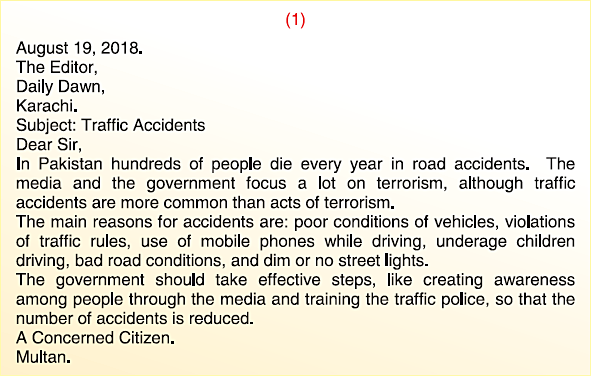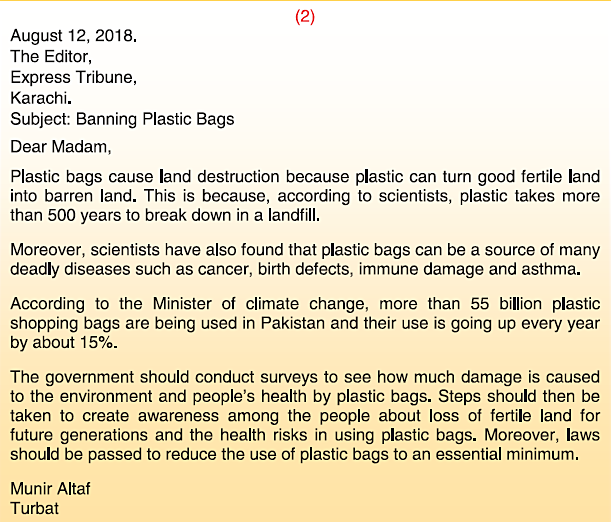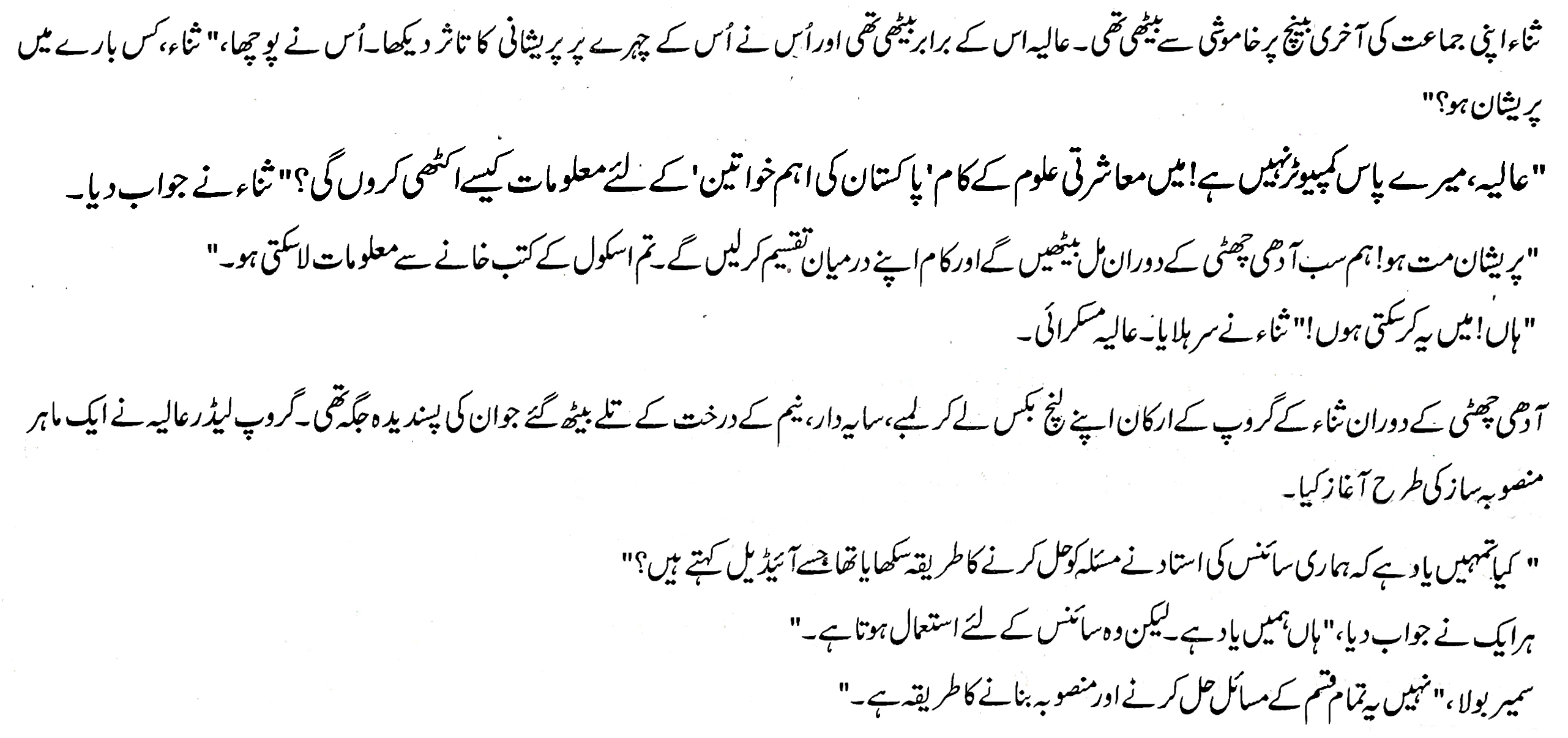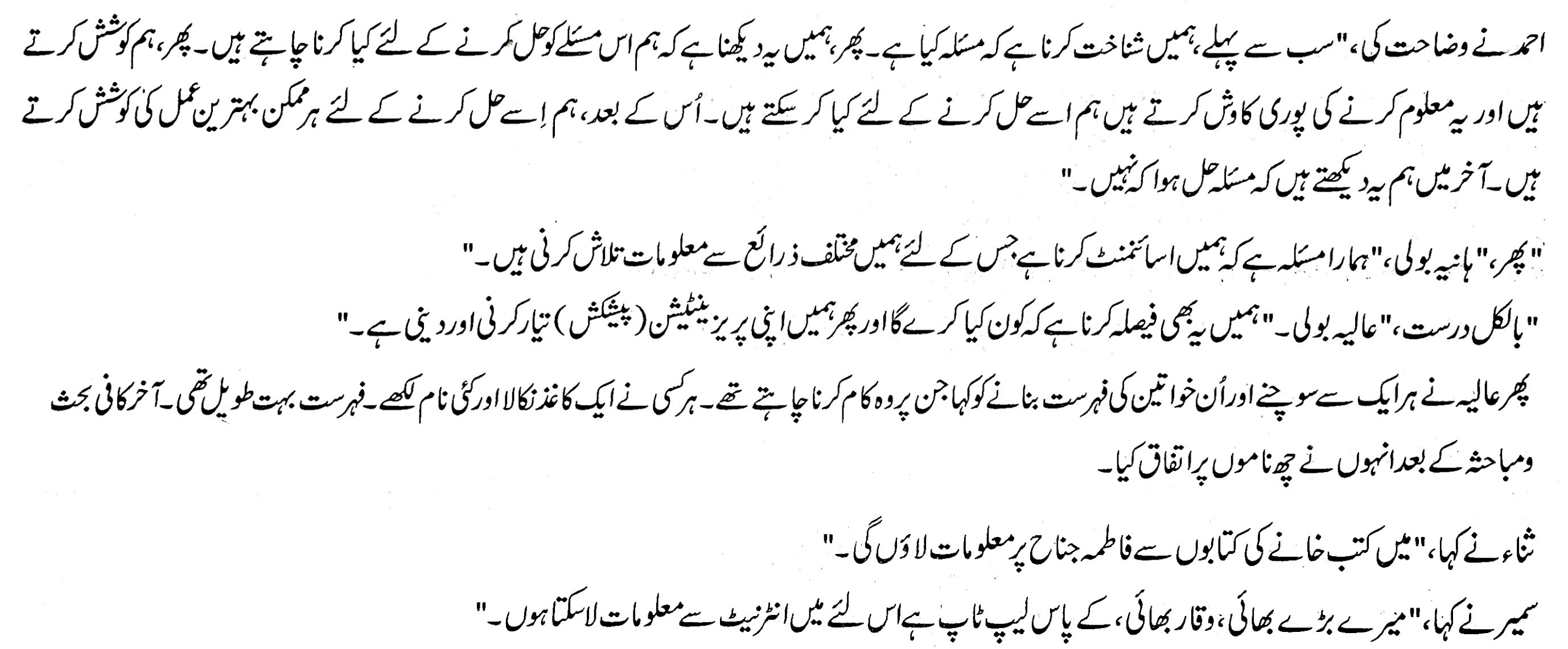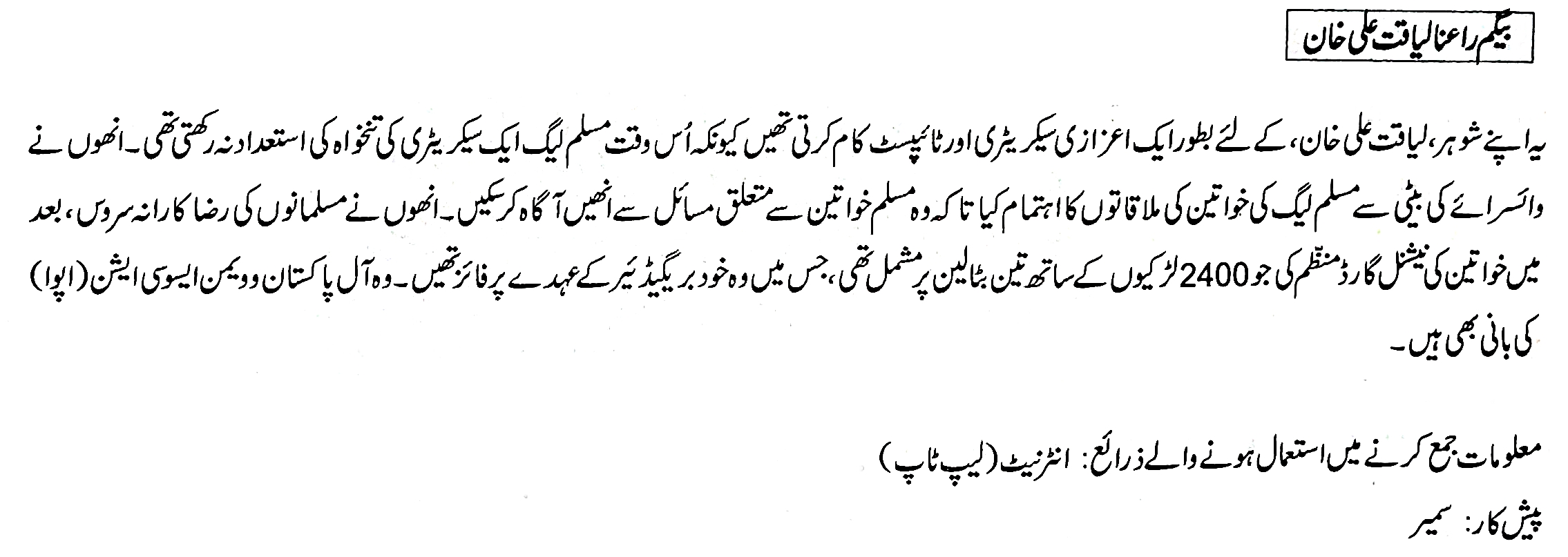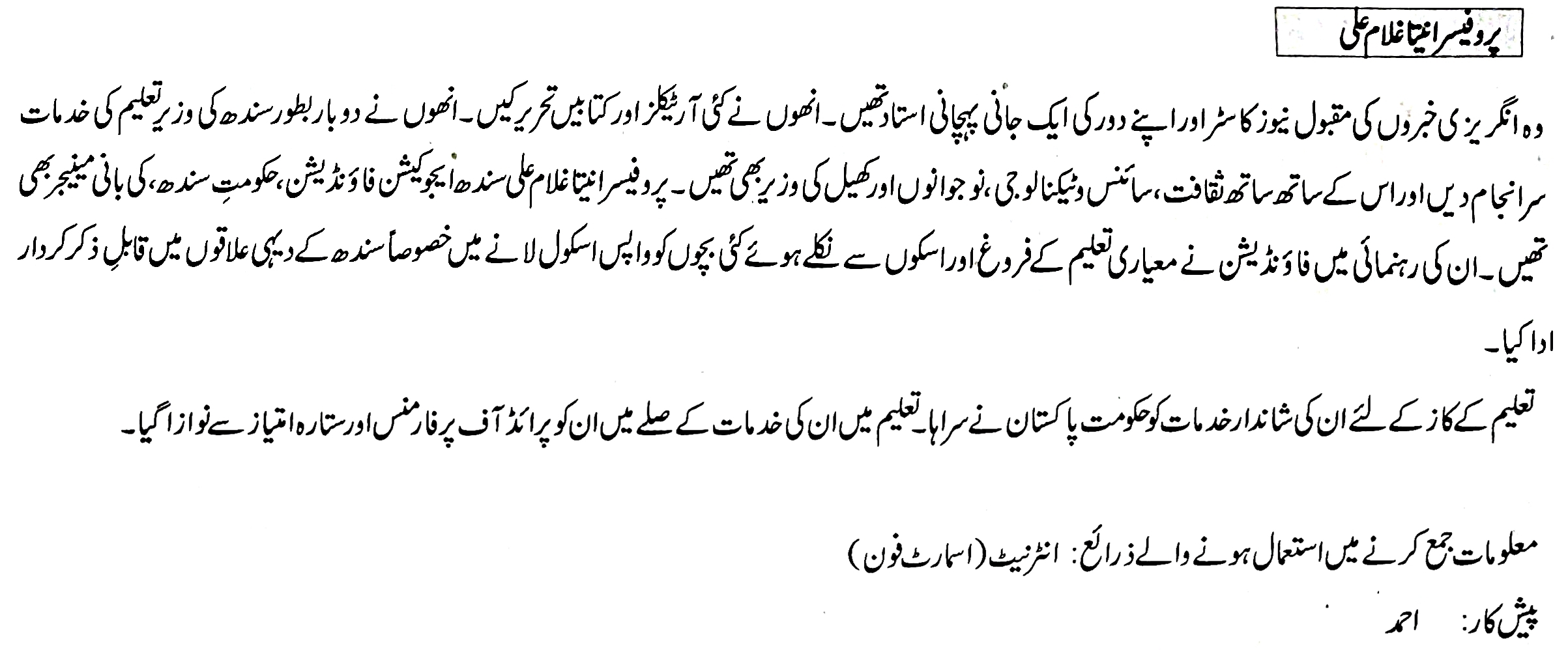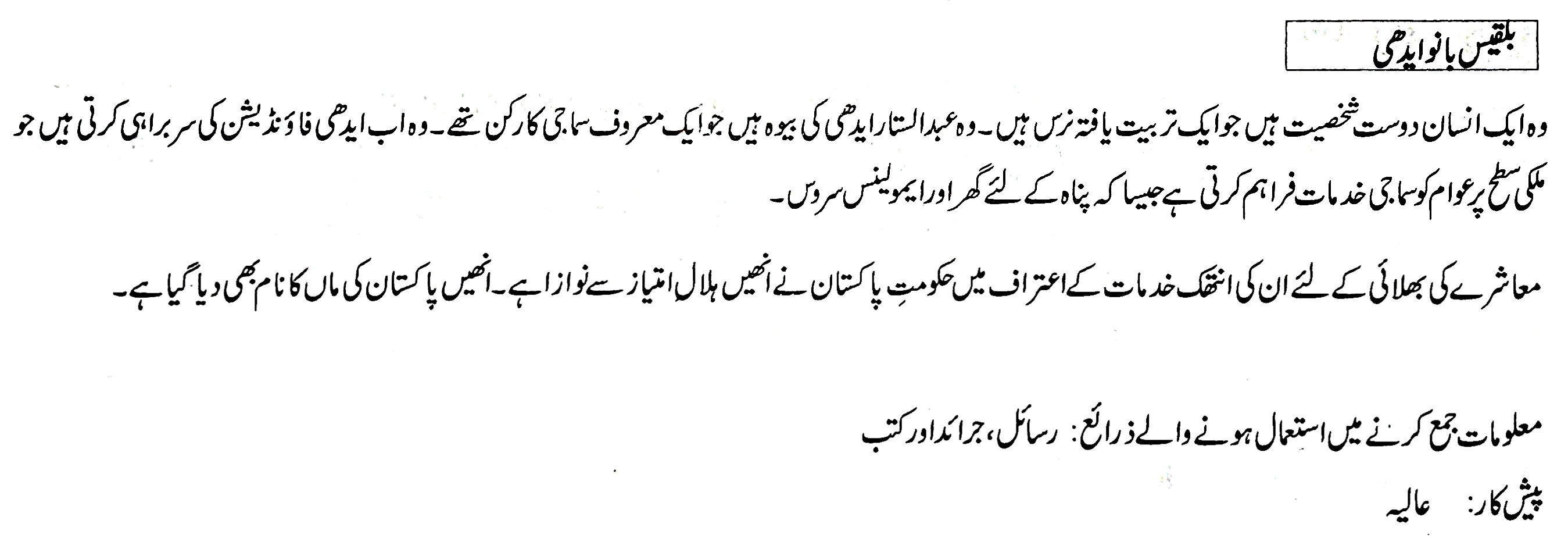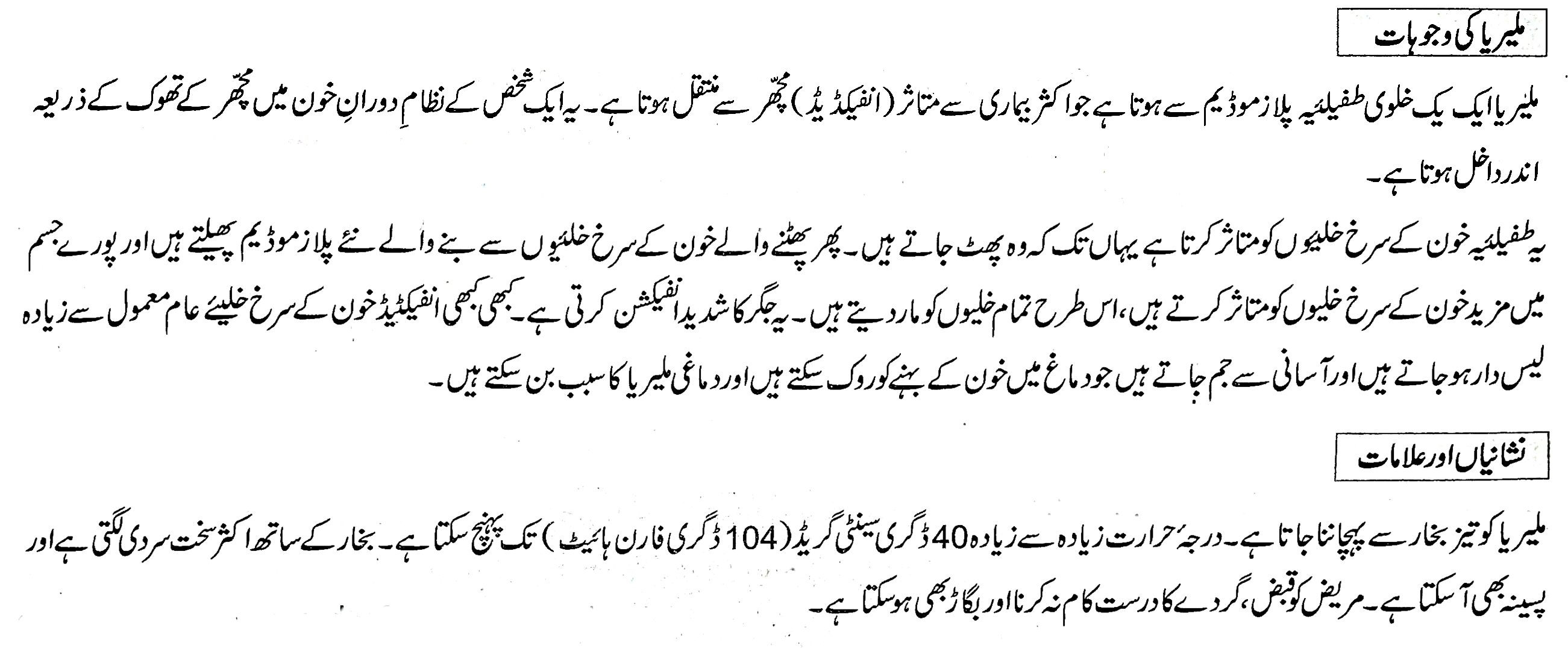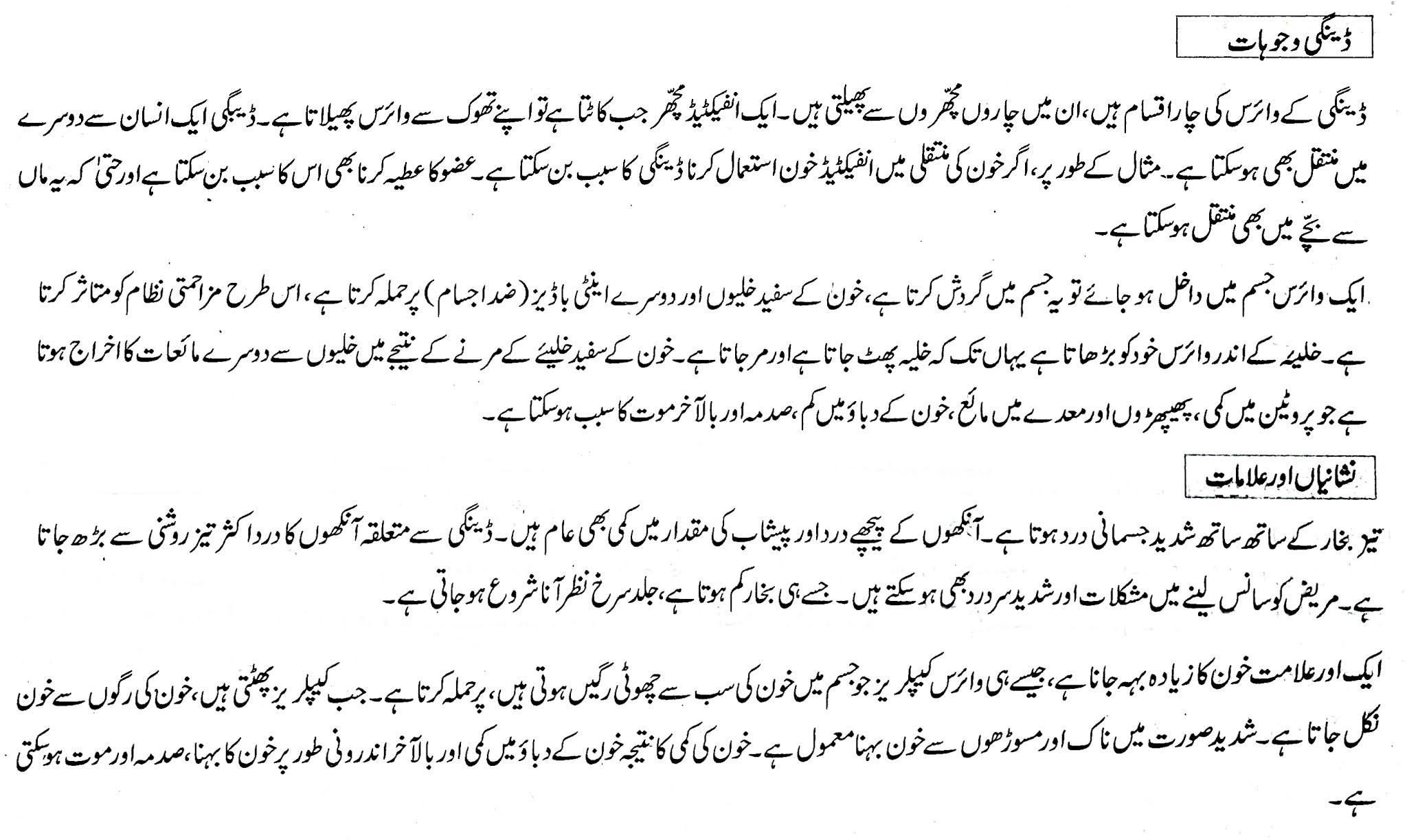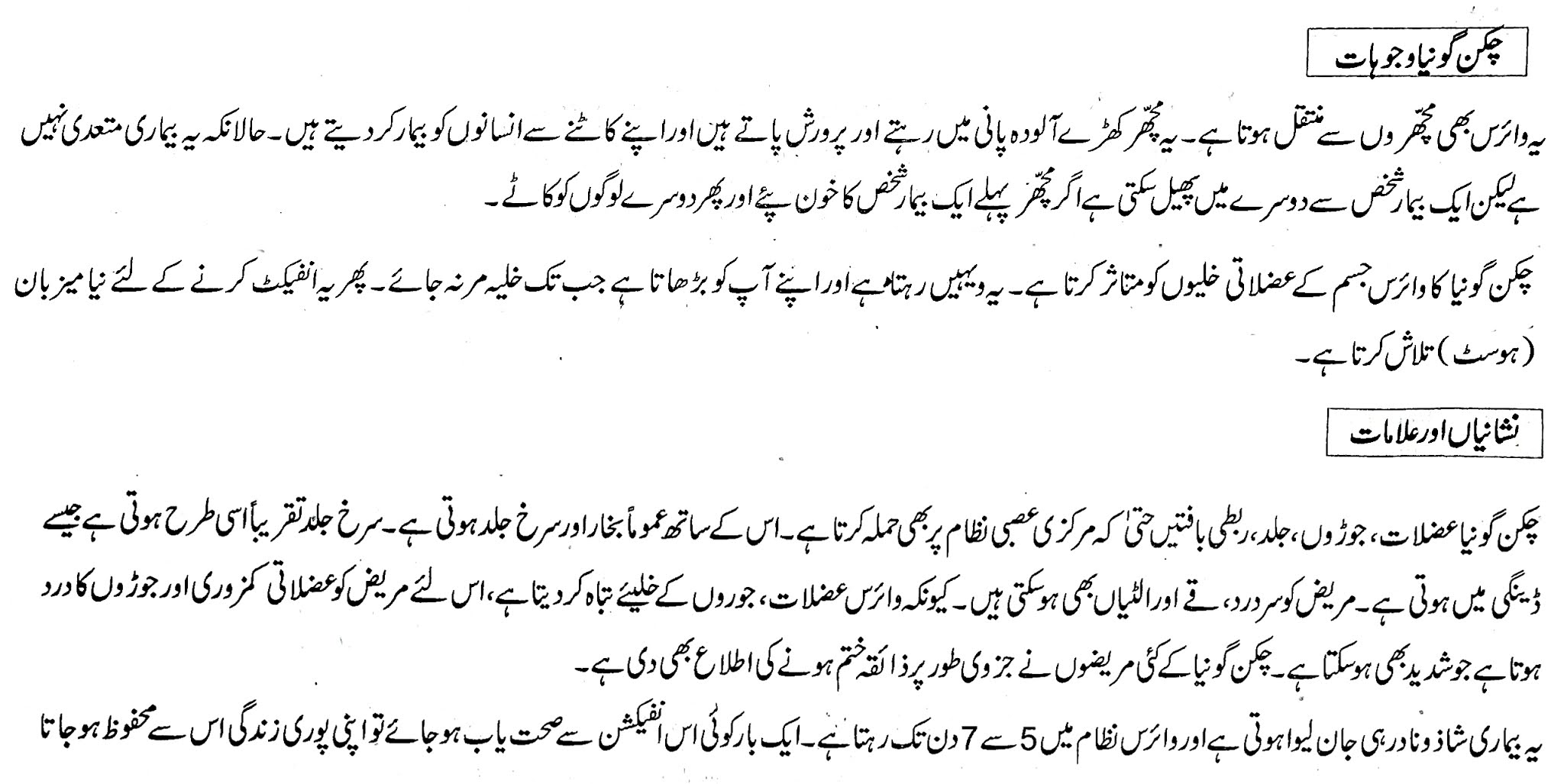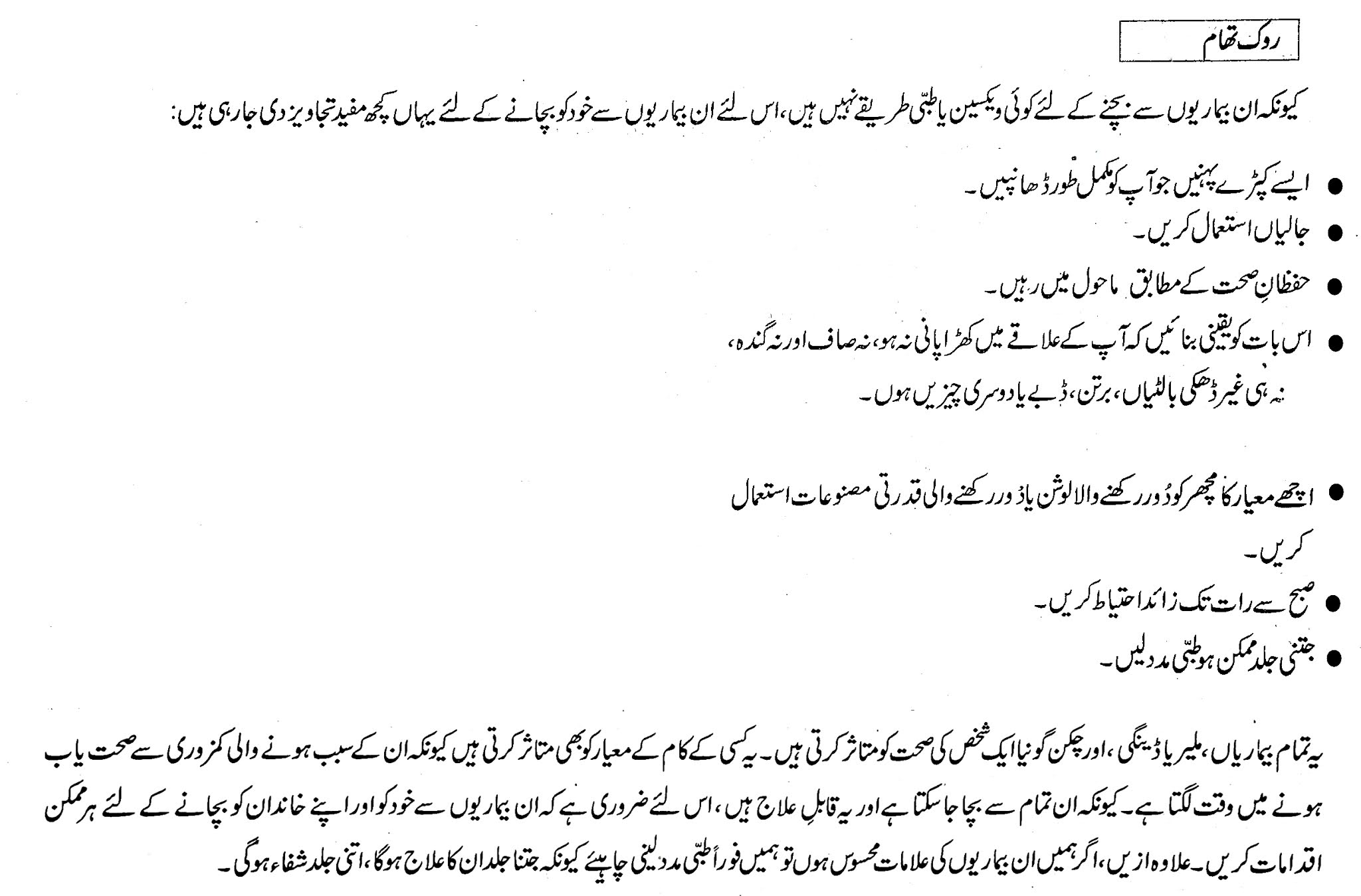GO TO INDEX
The Last Sermon Of Holy Prophet (P.B.U.H)
TEXT BOOK EXERCISE 1.4 - 1.6
UNIT 1.4 WRITING
Descriptive Essay:
A descriptive essay describes a person, place or thing. It includes important details about the person, place or thing in such a manner that the readers can create a picture in their mind about the object being described.| PERSONS | OBJECTS AND PLACES |
|---|---|
| General description, moving from general to specific. | Physical description and characteristics of an object/ place, moving from general to specific. |
| Detailed physical description of face, build, clothes, expressions, etc. | Finer details of size, colour, shape, texture, structure, etc. |
| Personality trait e.g. habits, attitudes, behaviour, etc. | Atmosphere of a place/ qualities of an object |
Use appropriate adjectives and adverbs for vivid effect.
Write the details in an appropriate order.
Exercise 1
First. individually, read the following essay. titled 'Deserts'. Notice how the introductory and concluding paragraphs are written. Also notice how the topic sentence and the other details are linked in each body paragraph.
Next. discuss the following aspects with your partner.
• Discuss the introductory paragraph. Is the thesis statement at the end of the paragraph given in one sentence or two sentences? The thesis statement should contain all the key ideas that are covered in the essay.
Ans Thesis statements are given in two sentences (2nd and 3rd sentences) in first paragraph:
Sentence 1: A desert is a vast plain of sands and stones, having some mountains and hills of various sizes and heights.
Sentence 2: They are usually without roads or shelters. Sometimes, deserts have springs of water, which create green, grassy spots, with a few trees.
• Underline the topic sentence in each body paragraph.
Ans: Highlighted as blue in given paragraph below ☟.
• Discuss how each topic area is explained with facts, examples, ideas, opinions, etc.
Ans: Following topics are explained in below paragraph:
- Desert: vast areas of sand with no tree and no water. Examples are Sahara desert and Amid desert.
- Oasis: A small area in desert with springs of waters, few trees and grass.
- Travelling in desert is difficult due to lack of water and no shelter of tree or greenery.
• See how the closing paragraph is written; underline the signalling closing word or phrase used. Also discuss how the paragraph briefly brings together the central idea, all the supporting ideas. Underline the concluding statement does it give an idea, suggestion, recommendation, etc.
Ans: Concluding statements are bold and underlined in last paragraph below ☟.
DESERTS
It is difficult to imagine what a desert looks like without having seen one. A desert is a vast plain of sands and stones, having some mountains and hills of various sizes and heights. They are usually without roads or shelters. Sometimes, deserts have springs of water, which create green, grassy spots, with a few trees. One of the most remarkable deserts of the world is the Sahara Desert.
Springs of water are usually few and far apart in deserts. Where such springs are there, an oasis is formed. An oasis is an area in the desert where there is water and where plants grow. It is a place where tired travellers and their animals quench their thirst and find a shady place to rest. Were it not for these small springs and shady places, no human being could cross the vast stretch of burning sand. To be thirsty in a desert, without water, exposed to the burning sun without shelter, is one of the greatest sufferings that a human being can be exposed to.
One of the most remarkable deserts in the world is the Sahara Desert. This desert is a vast plain, but is slightly above the sea level. It is covered with sand and gravel, with a mixture of sea shells, and looks like the basin of an evaporated sea. Amid the desert, there are springs of water and oases. There are thirty-two of these that contain fountains and date palms; twenty of them are inhabited. They serve as stopping places for the caravans.
To conclude, a desert has vast areas of just sand, with no trees or forests. The only places where a few trees and some grass can be found are the oases, where the tired and thirsty travellers can rest. Travelling in the desert used to be, and sometimes still is, very risky and lack of water can lead to suffering and death. However, modern technology, including satellite phones and advanced modes of transport, have greatly reduced the risks and sufferings.
Exercise 2:
Now, work in pairs and write a descriptive essay of at least four paragraphs on one any of the following topics:
Note: Click on topic to view essay
Here are the guidelines that you should follow:
- Brainstorm for ideas
- Select the ideas to be covered in the essay
- Write an introductory paragraph with a clear thesis statement at the end of the paragraph. The thesis statement should contain all the key ideas that are to be covered.
- Use a separate paragraph for each topic area.
- Write a clear topic sentence for each key idea.
- Include evidences (facts, quotations, etc,), examples (analogies, anecdotes etc.).
- Add a closing or summary paragraph with a signalling closing word or phrase (to sum up, in the end, etc.), brief summary of the main points discussed in the essay, and a general concluding statement giving an idea, suggestion, recommendation, etc.
- Follow grammar and punctuation rules.
- Edit your work to see that you have covered points c — h, given above.
Formal Letters
Exercise 3First, individually read the following letters to the editor complaining about a problem/issue. Note the layout and the vocabulary, style and tone used.
Letter (1)
Letter (2)
Next, work with a partner and analyse these letters by discussing the following aspects:
a. To which newspaper's editor were these letters written?
Ans: Letter (1) is written to the editor of Daily Dawn), while letter (2) is written to editor of Express Tribune.
b. Are these letters addressed to a man or woman?
Ans: Letter (1) is addressed to man (Editor of Daily Dawn), while letter (2) is addressed to woman (Editor of Express Tribune).
c. What problem has been identified in letter 1 and in letter 2?
Ans: Letter (1) is about the causes of Traffic accidents occur on road in Pakistan, while letter (2) is about to banned plastic bags due to its fatal affects on earth.
d. Which of these letters gives reasons for the problem?
Ans: Letter (1) gives reasons for the daily road or traffic accidents.
e. Which of these letters gives suggestions?
Ans: Letter (2) gives suggestion to banned plastic bags because of its bad affects on earth.
f. Do we know who wrote both these letters?
Ans: Yes, the name of the sender is written at the end of each letter, as:
- In letter (1) sender did not mention his name rather he represent himself as 'A concerned citizen from Multan.'
- In letter (2) sender name is Munir Altaf from Turbat.
g. Why is the name of one writer missing?
Ans: In letter (1) the sender or the writer name is not mentioned because this letter is written to the editor of newspaper for publication and the purpose of the letter is to bring government concern about traffic accident problem.
Exercise 4
Work in pairs and write a letter to the editor complaining about a problem / issue, of the letter given above.
- Follow these steps:
- Brainstorm for ideas
- Select the ideas to be covered in the letter
- Decide the name of the newspaper and the gender of the editor
- State the problem in paragraph 1.
- List the possible reasons for the problem in paragraph 2
- Give ideas/ opinions/ suggestions to the concerned body in paragraph 3. g. Use the appropriate format, layout, vocabulary, and tone.
- Edit to check for points c — g stated above
Note: For Formal Letters Click above link. ☝
UNIT 1.5 STUDY SKILLS
Note: For acquiring additional language skills. Not to be formally assessed.Editing:
Editing adds quality to your work. Edit everything that you write before you send / give it to anyone, even if it is a two-line email. Editing helps you look critically at your work and it makes you think of the rules of language that you have learnt. If you are not sure whether something is right or wrong, check it from someone who knows, or from the internet, or even from your books.
Exercise 1:
One of the students wrote a story and gave it to the teacher. The teacher underlined the parts where there were errors and returned it back to the student to correct it and then submit it again. The story is given below. Work in pairs and read the story. It contains many types of errors, grammatical, punctuation, capitalization, spellings, wrong words and so on. Correct all the underlined errors, first orally and then rewrite the corrected story in your notebooks.
The Wise King
A rich man was on his death bed. He told her sons to dig the ground under his cot and share the buried wealth, after his death. when he die, the sons starts digging. one of them find a vessel full of jewels and parls, another a vessel full of gold and silver coins, the third one a vasel full of bones, and the first a vessel full dust. The last two quarreled with the first three and said that the riches shuld be shared equally amongst them? the first two did not agree
Finally, all four decide to put their case before the king. The king listened to their storey and decided that the on who got the jewels should kept them and the one whose got the coins should also keep them. The other two brothers felt very said when the heard this.
Then the king looked at the other two daughters, and said that the one who had the vessel full of bones was to be owner of the cattle left by her father, and the one with the vessel that has dust was to get all the land owned by the rich woman.
This decision by the minister was liked all the brothers. They amazed at the kings wisdom. They was all satisfied and happy with the decision.
Ans: The Wise King
A rich man was on his death bed. He told his sons to dig the ground under his cot and share the buried wealth, after his death. When he died, the sons started digging. One of them found a vessel full of jewels and pearls, another a vessel full of gold and silver coins, the third one a vessel full of bones, and the fourth a vessel full of dust. The last two quarreled with the first two and said that the riches should be shared equally amongst them. The first two did not agree.
Finally, all four decided to put their case before the king. The king listened to their story and decided that the one who got the jewels should keep them and the one who got the coins should also keep them. The other two brothers felt very sad when they heard this.
Then the king looked at the other two sons, and said that the one who had the vessel full of bones was to be the owner of the cattle left by his father, and the one with the vessel that had dust was to get all the land owned by the rich man.
This decision by the king was liked by all the brothers. They were amazed at the king's wisdom. They were all satisfied and content with the decision.
Exercise 2:
The following story also has similar errors as the story in exercise 1. First, work individually, read the story, and try to find out the errors in this story. Underline the portion where the error is and write the correct form above it.
Once you have done this, work in groups of three, and discuss your work. After discussing make the necessary changes in your book. Finally, write the corrected story in your notebooks.
The Four Seasons
There was a man who had four son, he wanted his sons to learnt not to judge things too quickly. So he send them each one of them, one by one, to go and look at pear tree that was a greet distance away.
The first son went in winter, the second on spring, the third in summer and youngest son in autumn. When they had all go and come back, he called them together to describe what they had see. The first son said that the tree was ugly, bent, and twisted the second son said no if was covered with green buds and full of promise. The three son disagreed; he said it was laden with blossoms that smelled so sweet and look so beautiful, it was most graceful thing he had ever seen. The last son disagreed all of them; he said it was dropping with ripe fruit, full of life and fulfillment.
The man then explained to his son that they were all right, because they had each seen but only one season in the trees life. He tell them that you cannot judge a tree, or a person, by only one season or on the basis of knowing about only one aspect of his life. So, don't let the pain of one season destroy the joy of all the rest. Dont judge life by one difficult season or people on the basis of one bad example.
(Hint: Exercise 2 has twenty errors in all; five each in the first and third paragraphs and ten in the second one.)
Ans: The Four Seasons
There was a man who had four sons, he wanted his sons to learn not to judge things too quickly. So, he sent
The first son went in winter, the second in spring, the third in summer and the youngest son in autumn. When they had all gone and came back, he called them together to describe what they had seen. The first son said that the tree was ugly, bent, and twisted. The second son said, "No, it was covered with green buds and full of promise. The third son disagreed; he said that it was laden with blossoms that smelled so sweet and looked so beautiful. It was most graceful thing he had ever seen. The last son disagreed all of them; he said it was drooping with ripe fruits, full of life and fulfillment.
The man then explained to his sons that they were all right, because they had each seen but only one season in the tree's life. He told them that they could not judge a tree, or a person, by only one season or on the basis of knowing about only one aspect of his life. So, don't let the pain of one season destroy the joy of all the rest. Don't judge life by one difficult season or people on the basis of one bad example.
